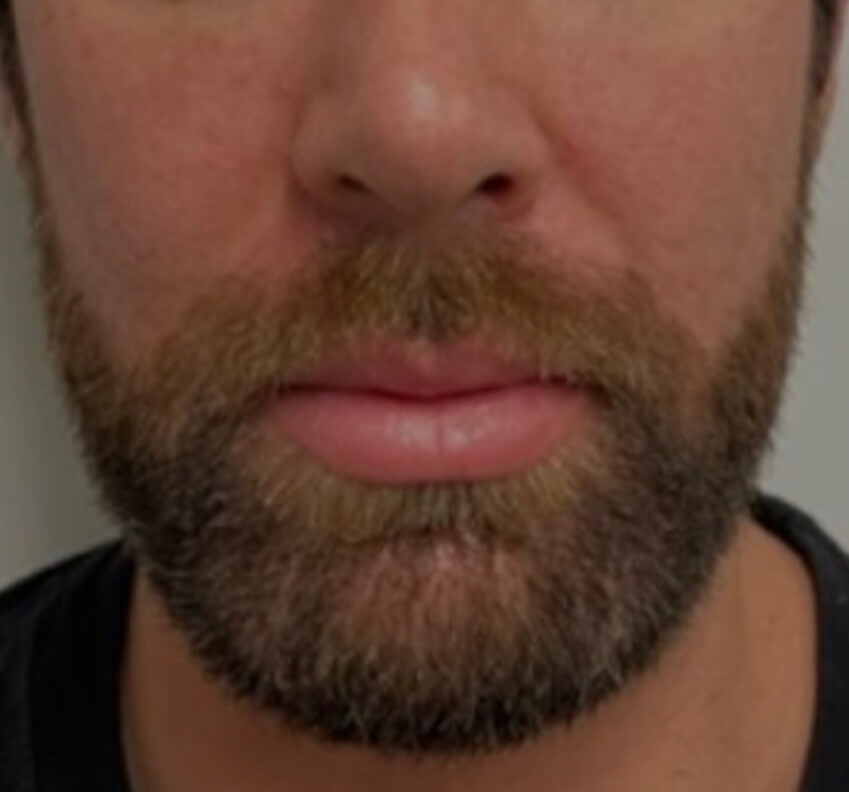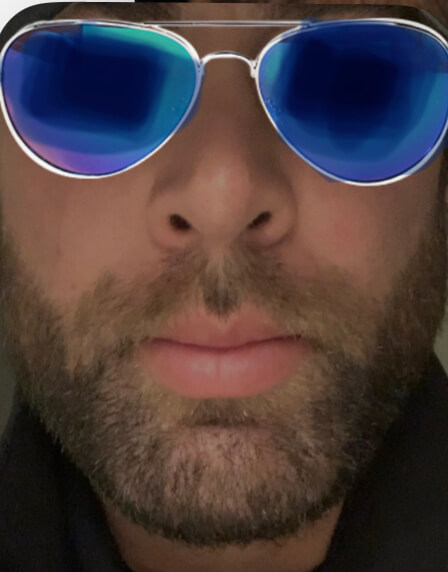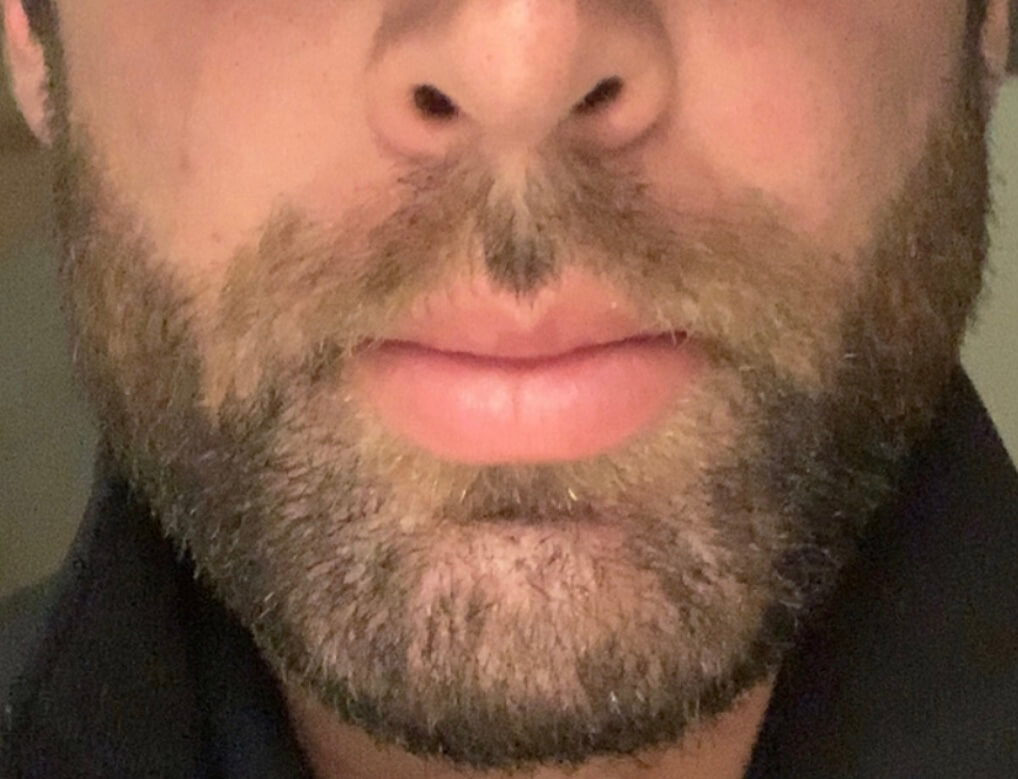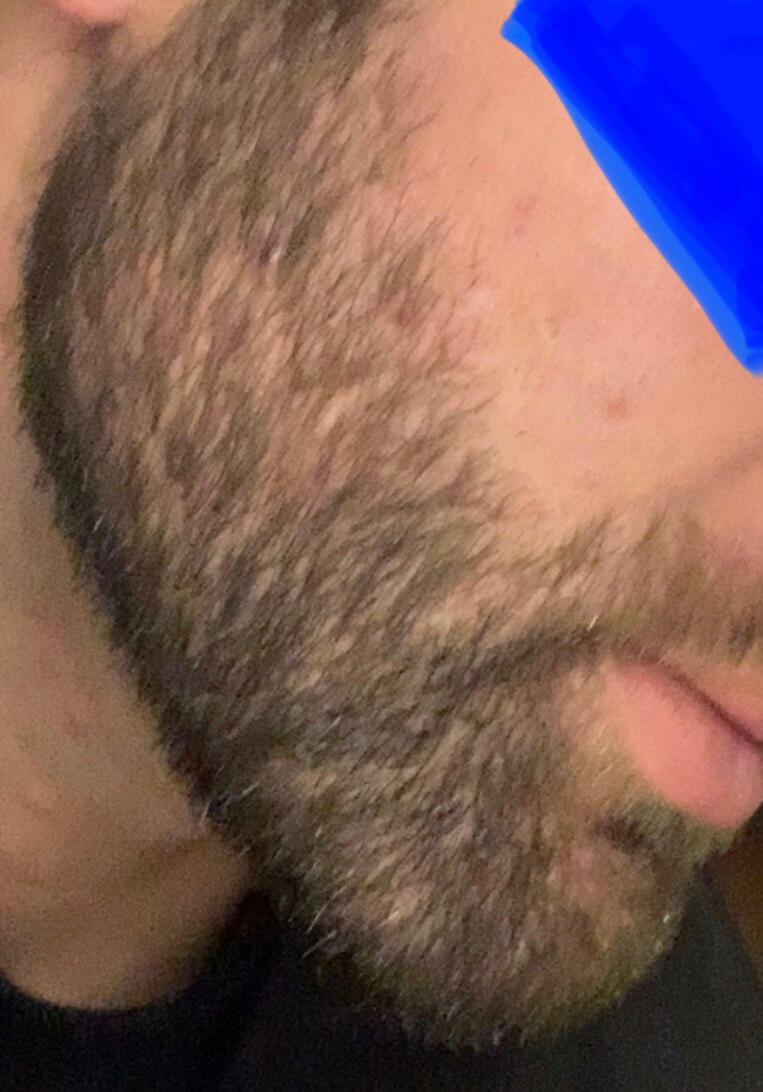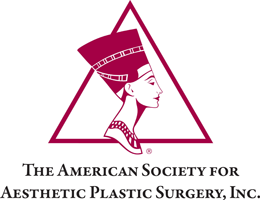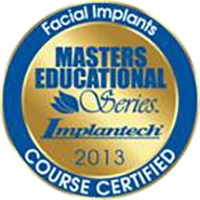- What are Facial Implants
- Who is a Good Candidate for Facial Implants?
- What are the Different Types of Face Implants?
- Why Facial Implants?
- How Can I Prepare for Facial Implant Surgery?
- What Can I Expect from a Facial Implant Procedure?
- Recovering from Facial Implant Surgery
- Potential Risks and Complications from Facial Implants
- How Long Do Facial Implants Last?
- How Much Does a Facial Implant Cost in San Francisco?
- How Do I Book a Consultation for a Facial Implant Procedure?
What are Facial Implants
Facial implants are used to bring balance and definition to your facial appearance. These implants are made from specially formed solid materials like silicone or polythene that are compatible with human tissues. While these implants can be used on almost any part of the face, they are typically used to enhance the chin, jaw, or cheeks.
In the past, facial implants were limited to a few standard-sized options, but modern advances have expanded the possibilities. Today, facial implants are available in many different sizes, shapes, and styles, allowing you to get a customized implant crafted to your exact needs. There is a treatment solution for virtually all areas of the face – the temple, the jawline, and everything in between.
Schedule a consultation with Dr. Shahin Javaheri to learn more about your options for facial implant surgery.
Who is a Good Candidate for Facial Implants?
As with other types of cosmetic surgeries, the best candidates for facial implants are healthy, non-smoking individuals without pre-existing conditions or active diseases. If you do have an underlying condition, be sure to discuss this with Dr. Shahin Javaheri. It may still be safe to undergo the procedure, providing proactive measures are taken. But, do be aware that there may be more risks involved.
Another thing we look for in candidates is age. It’s best to have a face implant done once your facial bones have reached full physical maturity. This usually happens between the ages of 20-25. Also, it’s important to have realistic expectations for the procedure. While implants are generally very effective, they aren’t a solution to every problem.
If you smoke, we recommend that you quit prior to the implant procedure. Smokers are at an increased risk for complications after surgery. When you smoke, carbon monoxide enters your blood cells and lowers oxygen levels in the blood. Oxygen is critical to recovery, which is why smokers often experience slower healing times as well.
What are the Different Types of Face Implants?
Face implants can be used on nearly all parts of the face, but they most commonly address the chin, jaw, and cheeks. Let’s break down the different types of face implants and the problems they address.
- Chin implants. Do you feel that your chin is not in proportion with your forehead or face? Some people have recessed chins that seem to blend in with the neck rather than being a distinct facial feature. A chin implant can make the chin bigger and more distinct.
- Mandible and Mandible angle implants. A weak jaw refers to a receding chin. This is a common complaint that we hear a lot, as it can make the face look unbalanced. Jaw implants increase the width of the jaw to make it look like a well-defined facial feature.
- Total mandible implants. Dr. Javaheri utilizes the latest advances in 3 3-dimensional CT scan to determine the exact implant shape and size of an implant for a patient to create the desired shape of the jaw-line.
- Cheek implants. If you’re looking to lift or add volume to the cheeks, cheek implants will do the trick. These facial implants add volume to areas that may be flat or recessed.
- Nose implants. Nasal implants elevate the bridge line and improve tip projection. They are usually done as part of a nose reshaping surgery, but they can be done on their own as well. Overall, these implants enhance the bone structure around the nose to create a better balance of facial features.
- Temple implants. Temple implants are used to enhance or eliminate the hollow area of the temples. Some people develop a hollow, almost skeleton-like appearance in the temples. An implant is the best way to eliminate this problem. It’s far less costly than using fillers, especially over a lifetime. The temples can be customized as well.
Why Facial Implants?
I will answer many questions that I have been asked during my many years of practice regarding the many different types of facial implants by addressing each one separately.
The types of implants that I use are made of solid silicone and can be used either from a pre-made type or created using a 3D CT scan technology.
-
- Cranial or Skull Implants. These types of implants are essentially the best way of filling the defect that a person may have or wish to enhance. For example, some are born with certain craniosynostosis (congenital skull deformities), or following trauma or post-neurosurgery, that leave a large segment of the skull deficient. Using a 3D CT scan this defect can be accurately measured. The measurement data is then transferred to a manufacturer which then creates the exact implant to “fill in” the deficit. The implant is then placed in an outpatient surgery facility. The same can be done for a person trying to enhance the front or sides of their skull or cranium in cosmetic surgery.
- Temples. This is an area that sometimes is referred to as the temple hollows. Temple hollows tend to give a skeleton appearance to an individual. Often non-plastic surgeons or other facial plastic surgeons fill this area using fat grafting or dermal fillers. Fat grafting or dermal fillers have been known to cause strokes, blindness, or other catastrophic problems. Also, it takes quite a lot of fillers or fat to fill in this area not to mention that is not permanent and very costly.A temporal implant is a one-time surgical procedure that is permanent and very cost-effective. Though there is an obvious recovery, nothing will beat the results. There are very few risks, and the incision can be placed in a location that would be as hidden as possible.I use this in my facelifts with outstanding results.
- Cheeks. This is another location that is frequently used with dermal fillers or fat grafting. Though using dermal fillers or fat grafting is relatively simple it is still a temporary procedure that tends to be very costly in the near long term. Another aspect to remember is that soft tissue fillers, such as hyaluronic acids or fat, do not create a real enhancement of the cheeks. They enhance the soft tissue only and not the bony part of the cheeks. There is truly no better way to enhance the cheeks than an implant. Of course, the patient should be aware that it is a surgical procedure with its recovery and initial cost; however, the cost of only a few sessions of dermal fillers will overtake the surgical cost of an implant.
The surgery itself is performed using a small incision inside the mouth. It is well hidden and heals very well. The risks of infection are very small. - Mid-face or Para-pyriform. This area can be enhanced by an implant placed through an incision inside the mouth. The goal is to cause an outward projection of the mid-face. The implant can either be a prefabricated implant or a patient-specific (custom) implant using 3D Ct scan technology.
- Chin. The chin is an area that is very well known by the public since it has been performed for several decades. In properly trained surgeons the surgery is done with minimal risks and can even be performed under local anesthesia. It can provide an outstanding result and there are many sizes and shapes such as a square shape for those who desire a “square” and masculine chin or rounded or extended, etc. The chin can also be advanced through orthognathic techniques, but these can be more complicated and have some limitations.The implant can be placed through an incision inside the mouth (intra-oral) or just under the chin (sub-mental). I prefer the sub-mental approach since there is no chance of mixing with oral bacteria, hence overall less risk of infection.
Below is a photo of a patient before (left) a chin implant, and after (right) a chin implant and rhinoplasty
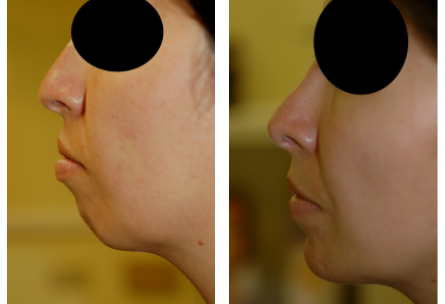
-
- Mandible. The angle of the mandible is an area that is best enhanced using an implant. Recently dermal fillers are being used to enhance this area. These filters will achieve results, especially for those who do not want surgery or only want a temporary enhancement. Just like other aspects of facial skeleton implants is truly the best way to achieve outstanding results.
Orthognathic surgery can also be performed, but they are more complicated and have limitations. Implants come in a variety of sizes and shapes. Mandible implants can also be created using 3D CT scan technology to fit a certain image that one might want to project. These are termed custom implants or patient-specific implants.
- Mandible. The angle of the mandible is an area that is best enhanced using an implant. Recently dermal fillers are being used to enhance this area. These filters will achieve results, especially for those who do not want surgery or only want a temporary enhancement. Just like other aspects of facial skeleton implants is truly the best way to achieve outstanding results.
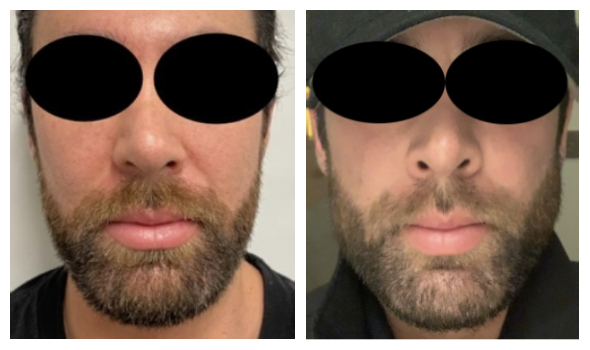
Above is a patient before (left) mandible angle implants and after (right) mandible implants.
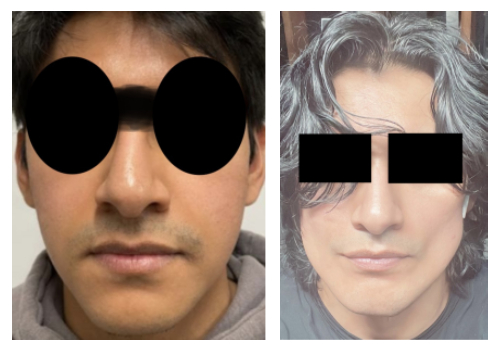
Above is a patient before (left) total mandible implant and after (right) total mandible implant.
- Nose. Nose implants have been around for a long time and they can result in a very good shape. Though complications can occur, they are generally rare.
Mandible Implants Before and After Photos
*Individual results will vary in each patient.
How Can I Prepare for Facial Implant Surgery?
Preparing for facial implant surgery is similar to preparing for any other cosmetic procedure. It’s important to quit smoking if you smoke, eat a healthy diet, and stop taking certain supplements and medications. This will be discussed in more detail during your consultation, so you will know what you should and should not be doing.
Here are some of the recommendations we make to all clients:
- Do not wear makeup, lotions, or perfumes to surgery
- Have someone available to drive you home
- Avoid aspirin, ibuprofen, and NSAIDs (these can affect bleeding)
- Stop taking herbal supplements
- Avoid alcohol, smoking, and sun exposure
- Wear comfortable, loose-fitting clothing
What Can I Expect from a Facial Implant Procedure?
Dr. Shahin Javaheri will provide you with all the details on what to expect from your facial implant procedure. Each procedure is different based on what you are having done, but here is some general information that will help you plan accordingly.
Anesthesia. Medications are administered to keep you comfortable during the procedure. Options include general anesthesia and IV sedation. The doctor chooses the best option for you based on what you are having done, how long the procedure will take, and other factors.
Procedure
Once comfortable, the procedure will start. Here is what you can expect from each one:
- Cheek implant. Cheek implants are typically placed through small incisions in the mouth. But, this could change based on where the implant will be positioned. If you’re having other work done, the incision may also be placed in a different area.
- Chin implant. In the case of chin implants, an incision may be made in your mouth, along the crease that joins your lower lip and gums. Sometimes, an incision may be made just beneath the chin instead.
- Jaw implants. Usually, jaw implants are placed through the mouth, with incisions made along the jawline at the crease where the gums and cheek meet. Incisions are closed with sutures that dissolve or stitches that are removed 1-2 weeks after surgery.
- Nose implants. Nasal implants are usually inserted from the inside of the nose to change the bridge or tip through a small incision inside the mouth, below the upper lip. However, absorbable implants are also available.
- Temple implants. Performed under general anesthesia, temple implants are inserted through a small incision (about ½ inch thick) hidden in the scalp behind the ear. The incision is closed with dissolvable sutures. The recovery is quick and manageable.
Recovering from Facial Implant Surgery
We realize that many people have concerns about the healing process after a face implant because this is the face – something that everyone sees! So, it’s important to have realistic expectations about the recovery journey. As an example, it can take several months for all of the swelling to go down. This is why we encourage clients to schedule their procedure at a time that allows for maximum recovery.
After the surgery, you will have bandages or dressings applied to the surgical areas. This will help keep these areas clean and also support the position of the implant so it can heal correctly. Dr. Shahin Javaheri will provide you with detailed instructions on how to care for the surgical site. The goal is to promote healthy healing and prevent infection.
If you have dissolvable sutures, they will absorb on their own. However, these stitches tend to cause more scarring, so we don’t always recommend them for facial implants. If we use regular stitches, we will remove them in about one week. We choose the best stitches based on where the incision is and how it’s expected to heal.
Typically, most clients only need a week or two off work, though this depends on your personal habits and if you are having other procedures done. Keep in mind that swelling and bruising are common and can take weeks or months to go away completely. Continue leading a healthy lifestyle, taking your prescribed medications, and following the doctor’s orders.
Potential Risks and Complications from Facial Implants
As long as you are in good health, non-smoking, and have a surgeon who is board-certified by the American Board of Plastic Surgery, your risks for complications are low. Still, it’s important to be aware of the possible risks you can experience such as:
- Allergic reactions from the anesthesia, sutures, dressings, etc.
- Heavy bleeding from the surgical site
- Blood clots that can lead to cardiovascular complications
- Infection that may require antibiotics
- Keloids and hypertrophic scars
- Temporary or permanent numbness at the surgical site
- Reduced ability to move your mouth and lips
How Long Do Facial Implants Last?
You’ll be happy to know that most implants last a lifetime. This is why some of our clients opt for implants as opposed to injectables or dermal fillers, as these have a much shorter lifespan. Facial implants require one procedure, making them practical and cost-effective. Plus, there is no need for extensive incisions, so you don’t have to worry about prolonged healing times or noticeable scars.
Keep in mind, however, that the face will continue to change shape with age. This is part of the natural aging process – something that we can slow down but can’t stop entirely! But the implant itself will stay intact and continue to provide the results you desire.
How Much Does a Facial Implant Cost in San Francisco?
On average, facial implants range from $3,500 for a single implant to $7,500 or more. The total costs for this procedure depend on the type of implant, how many implants you need, the expertise of the surgeon, and where the surgery is performed.
Keep in mind that these prices are for the implants only. You will also have to account for anesthesia fees, operating room costs, and post-surgical garments, among other things. When you schedule a consultation with Dr. Shahin Javaheri, he will go over all of your costs in more detail so that you have an accurate estimate.
Insurance almost never covers facial implants because they are an elective, cosmetic procedure. Reconstructive facial surgery, on the other hand, may be covered because it is viewed as a necessity. If you are having the surgery done for this purpose, you can talk to your insurance company to see if anything is covered.
SF Plastic Surgeon has flexible financing offers that can help you afford the cost of your procedure.
How Do I Book a Consultation for a Facial Implant Procedure?
Contact Dr. Shahin Javaheri by phone or by filling out our online contact form. We’ll be happy to schedule a time and date that works for you. We recommend writing down your questions so that you have all the information you need to make an informed decision.
Dr. Shahin Javaheri is very thorough and happy to explain any parts of the process to you. We can also discuss other options for reaching your goals (i.e., injectable fillers), as well as other cosmetic surgeries you may want to have at the same time. Please contact us today to schedule an appointment.
